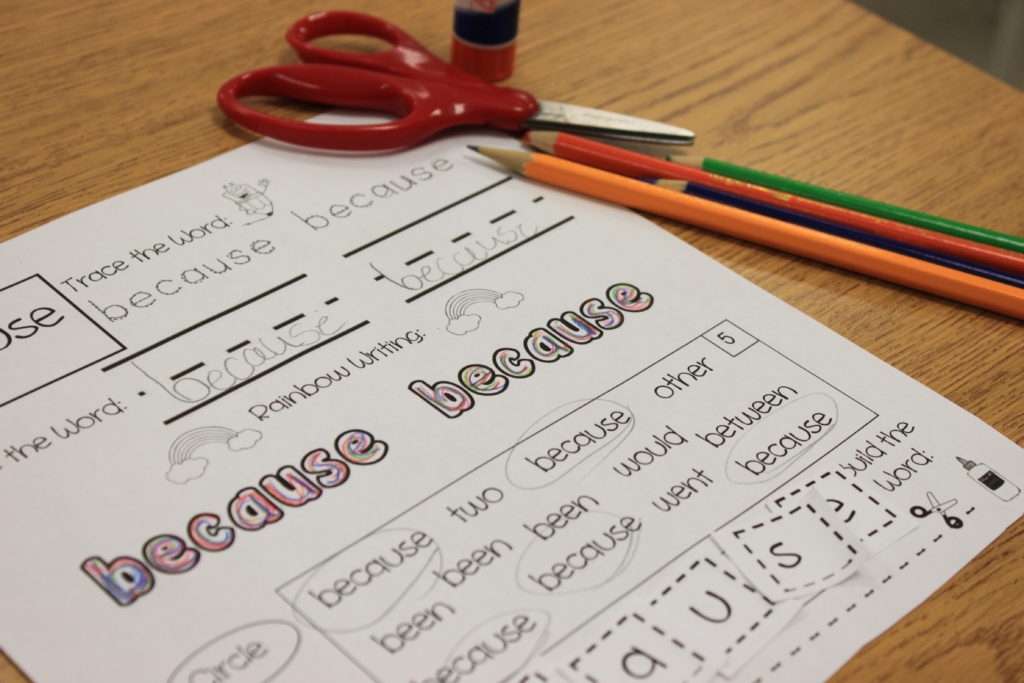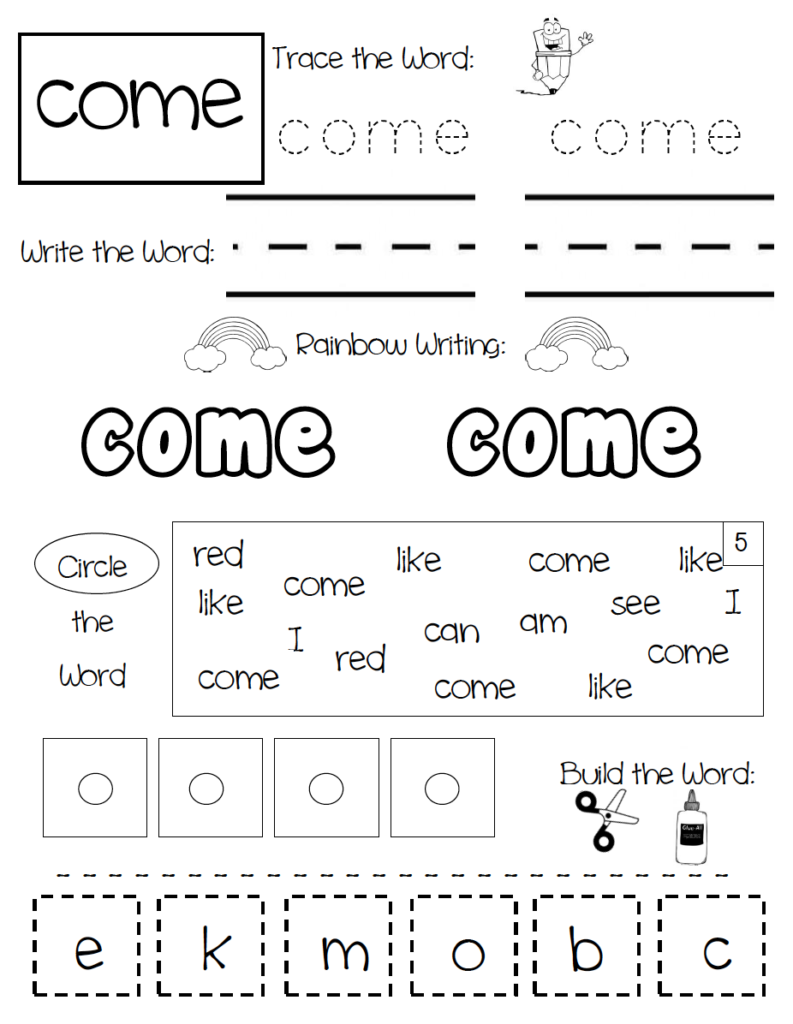Her hand was raised as high as it could go with just a little wave back and forth. Her excited smile lit up her face and her eyes said “I’ve got this!” And then . . .she proudly read our new sight word with a booming kindergarten voice “A$$!” My eyes widened and my cheeks flushed as I tried desperately not to giggle. “That was so close,” I was able to say in my best teacher voice.
I probably don’t have to tell you that learning to read English is hard. There are rules, rules and more rules. Then there are exceptions to the rules.
Top that off with the fact that our classrooms are filled with diverse and amazing kids. Some who love to sit and listen, while others like to get up and do. We have students who love to talk and sing and students who dread being called on to answer a yes/no question.
So what does this matter?
Learning is just hard work and teaching a classroom of diverse students is hard work too!
The multi-sensory approach to learning embraces all of these differences and works with them to help students learn. You might have heard that a multi-sensory teaching method is needed for students with special needs or learning disabilities. Well, you would be right. In fact, studies have shown that ALL students learn better when a multi-sensory approach to learning is used.
So what is multi-sensory learning?
Here’s my layman’s explanation. We have multiple highways that lead to our brain. Each highway only allows certain kinds of cars to drive on it. The Visual Highway only allows cars that are covered with pictures and colors. The Auditory Highway only allows cars that make sounds to drive on it. While as the Kinesthetic Highway only allows cars that jump, jerk, vibrate, spin, and do the hokey pokey to pass its way. Do you get the picture? Different cars – different highways. All leading to the same destination – our brain.
Our goal teaching with a multi-sensory approach is to send the same information down as many different highways as possible! I promise it is not as hard as it sounds.
Using a multi-sensory approach to teaching reading is scientifically proven to work!
How I Teach Sight Words
In my classroom we are working with sight words on a daily basis. Different ways on different days – but working on sight words everyday.
- Some days we are spelling them and adding body motions as we spell (Auditory, Verbal and Kinesthetic Learning).
- Some days we are building them out of play dough or word tiles (Visual and Kinesthetic Learning).
- And some days we write them on a partner’s back – with our finger of course – while spelling them in silly voices! (Visual, Textile, and Auditory)
When I plan an activity I try make sure that at least 2 different learning styles are used.
A few years ago I set out to create a multi-sensory sight word practice page that my students could do independently in a center. The result was a single page (can you say Yay! for saving copies) that allowed my students to practice reading and writing their sight word in 6 different ways. Not only did my students LOVE them but I saw an almost instant improvement in how quickly they were mastering these words.
What I love about this sheet is the many ways it gets my kids working with the word.
- First they touch the word (textile) , say the word and spell it orally (visual and auditory) Then they trace the word with their finger (visual and textile)
- Now it is time to trace and write the word with a pencil (visual and textile)
- Next up the class favorite, Rainbow Writing. There is something about using different colors that really helps those visual learners. (visual and textile)
- Then it’s time for a little word search (visual)
- Finally, they cut out the letter tiles and build the word (kinesthetic, visual, textile)
Are you Ready to Save Time and Help Your Students Master Their Sight Words?
You can also find full sets of Multi-Sensory Sight Word Practice Pages in the Teaching in Blue Jeans store. At just a few cents a page you can’t afford to not get your students mastering their sight words today!



You are SO right about needing to teach using a multi-sensory approach. I am just now expanding my thinking about this. I am starting to understand that even though people may excel in one type of learning (be a kinesthetic learner for example) they still NEED to learn about that same concept using other senses as well. The more senses "touched" aids in creating neural columns in the brain.
I think that is so interesting! I used to think that I needed to try to teach using multiple intelligences so that at one point, I would get to everyone's "best" way of learning. Now I am seeing that using ALL those different ways is building connections in EVERY brain. Powerful stuff!
Karen
Teaching Ace Blog
You are SO right about needing to teach using a multi-sensory approach. I am just now expanding my thinking about this. I am starting to understand that even though people may excel in one type of learning (be a kinesthetic learner for example) they still NEED to learn about that same concept using other senses as well. The more senses "touched" aids in creating neural columns in the brain.
I think that is so interesting! I used to think that I needed to try to teach using multiple intelligences so that at one point, I would get to everyone's "best" way of learning. Now I am seeing that using ALL those different ways is building connections in EVERY brain. Powerful stuff!
Karen
Teaching Ace Blog